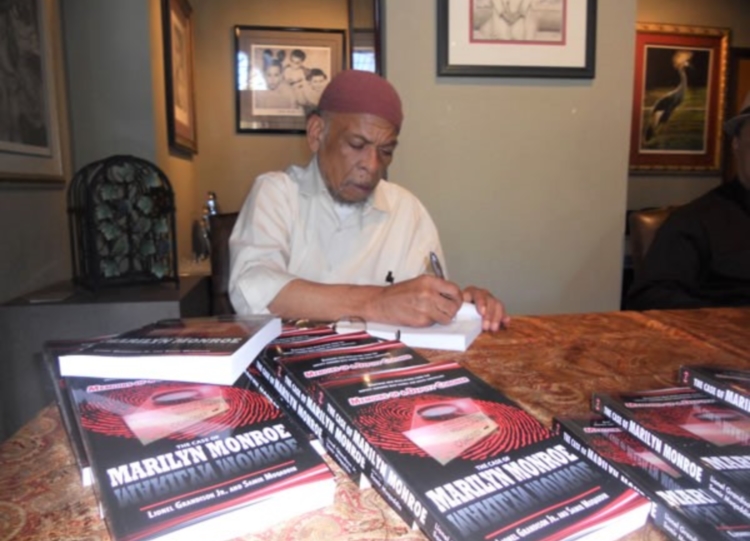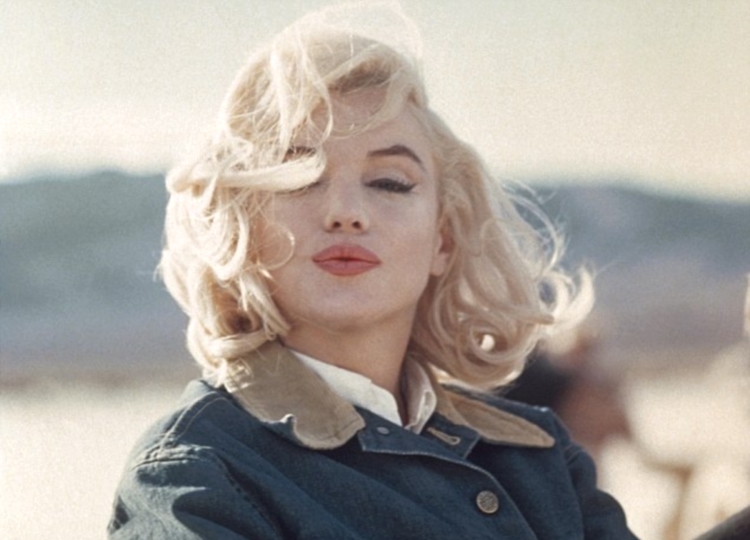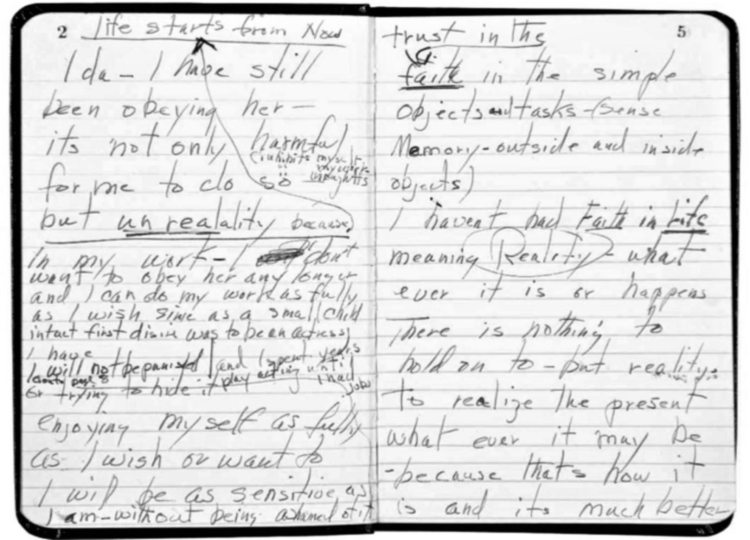Section 6
Marilyn's Red Book of Secrets
Compliments of Robert F. Slatzer, who began the mythology and the legend, the Holy Grail of Marilyn memorabilia would have to be her Little Red Diary, her Red Book of Secrets. If it could only be found. Just think of the intrigues and mysteries that might be solved; just think of the secrets it just might reveal. The mysterious shroud surrounding John Kennedy’s assassination might finally be lifted. Questions surrounding Area 51 and the Alieata might, once and for all, be answered; and the facts regarding Marilyn’s death might finally be known. Her nonpareil White Subway Dress sold for a mere five million, six-hundred and fifty thousand dollars in 2011, suggesting that Marilyn’s Little Red Diary would, possibly, be priceless. Does it still exist, hidden somewhere, concealed in some dark and dusty container located in some equally dark and dusty bureaucratic warehouse just like Indiana Jones’ Arc of the Covenant? Perhaps an even more significant question is this: did it ever exist at all?
Interviewer
Do you … ah … keep a diary by the way?
Well … not exactly a diary. Sometimes when things use to happen I use to write it down; but then, I use to tear it up.
Marilyn Monroe1Link to the 1955 radio interview with Marilyn:
<https://www.youtube.com/watch?v=lXeaeHijfO0>
Milo Speriglio,2Milo also wrote three books about the subject of Marilyn’s death. Marilyn Monroe: Murder Cover-Up, The Marilyn Conspiracy and Crypt 33: The Saga of Marilyn Monroe: The Last Word, published in 1982, 1986 and 1993, respectively. The eBook of Crypt 33 appeared in 2012. Adela Gregory appears to have been the primary writer of Crypt 33, with Speriglio acting as a co-writer.a private eye hired by Robert Slatzer to investigate Marilyn’s tragic and mysterious death, offered a $10K reward for her Little Red Diary. No one produced the book of secrets. Milo probably knew he would never have to pay that reward. In 1982, Doug Villers offered a substantially higher reward than Milo: six figures. I have seen accounts claiming Villers offered $100K and others claiming he offered $150K. Regardless of the actual amount offered, no one appeared to collect that money, either. Arguably one of the most significant and most sought after written diaries in the history of written diaries has never been found, not even after fifty-one years of intense publicity and intense searching.
Why only fifty-one years of searching? Why not over six decades, sixty-three years, the span of time that has elapsed, relative to the time in history during which I am writing this, since Marilyn departed this human realm? The legend of the Little Red Diary did not exist in 1962; the legend did not exist until Robert Slatzer published his dubious book in 1974 and introduced Marilyn’s Red Book of Secrets into Marilyn’s Realm and thus to the world. For the first twelve years following Marilyn’s death, no one knew to search for her monumental and revelatory diary; and once the search began, the diary had already disappeared, it seems, in a ghostly, numinous manner. So, bereft of the actual diary itself, what credible, verifiable and tangible evidence has been offered as proof that this Red Book of Secrets, handwritten by the One and Only Marilyn Monroe ever existed? The short answer: none whatsoever. All the evidence offered is either testimonial, anecdotal, consistently contradictory and as such, amounts to no evidence at all.
Essentially, Frank Capell and Norman Mailer began the Robert Kennedy murdered Marilyn Monroe legend and mythology, one that has expanded over the decades since the senator’s assassination in June of 1968, a mythology that has been even more pertinacious than the mythology surrounding Marilyn, president Kennedy and their purported lengthy romance and affair. The accusatory books produced by Capell and Mailer lacked one essential ingredient, however: an actual tangible motive for murder. Those writers offered fear of scandal and ruination by accusations of illicit extramarital sex as the possible motive for Marilyn’s murder, not a commonplace accusation in 1962, but one that the middle Kennedy brothers most assuredly would have survived due to their position in American society, their influence and wealth. Neither Capell nor Mailer mentioned a red diary upon the leaves of their books; but with the arrival of Robert Slatzer’s book in 1974, Marilyn’s Red Book of Secrets also arrived. Marilyn’s Little Red Diary became then, and remains even now, fifty-one years later, the lynchpin of the conspiracist’s theories, an essential element in and a significant part of their Marilyn was murdered orthodoxies.
Prior to the publication of Donald Wolfe’s The Last Days of Marilyn Monroe, his 1998 exposé about Marilyn’s murder, only four persons actually claimed to have seen Marilyn’s diary and read the words she committed in longhand to its pages: Robert Slatzer, Jeanne Carmen, Ted Jordan and Samir Muqaddin. Wolfe added a fifth name: Michael Rothmiller, a Los Angeles Police Department detective who was once a member of the Organized Crime Intelligence Division (OCID), otherwise known locally and colorfully as LAPD’s infamous Gangster Squad. As a new witness to the diary’s existence, Wolfe also introduced Norman Jefferies, handyman and the son-in-law of Marilyn’s housekeeper, Eunice Murray, as a witness to the diary’s existence. Jefferies recalled that Marilyn stored the diary either in her bedroom or locked in a filing cabinet, which she stored in her detached guest house; but Jefferies never claimed he saw or read the diary’s contents. Slatzer, Carmen and Muqaddin became the most prominent advocates for the existence of Marilyn’s Red Book of Secrets and members of a crusade to reveal the truth thereof; but as we shall see, the testaments uttered by the diary crusaders are contradictory and generate many more questions and more than reasonable doubt regarding the existence of Marilyn’s Little Red Diary.



